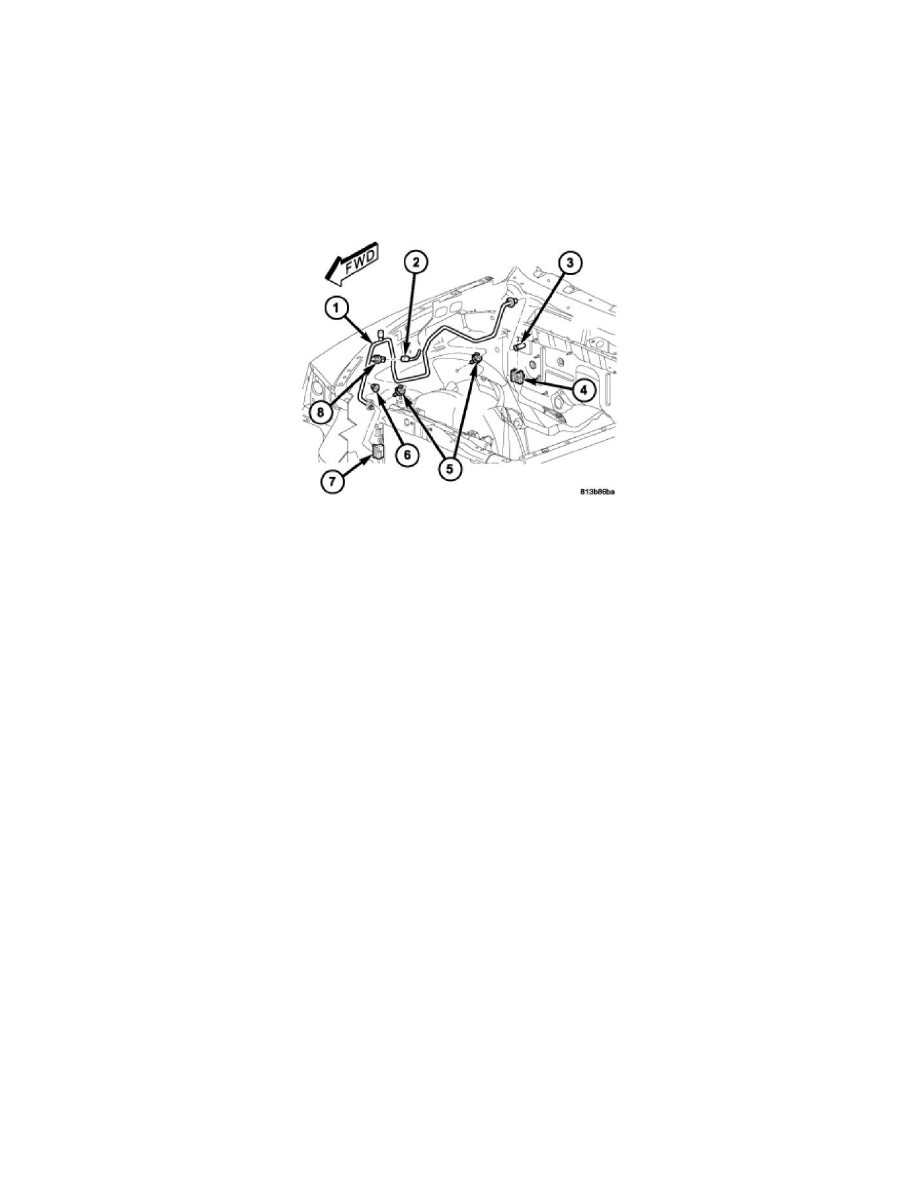Dakota 4WD V8-4.7L VIN P Flex Fuel (2007)

Hose/Line HVAC: Service and Repair
A/C Liquid Line
Removal
REMOVAL
WARNING: Refer to the applicable warnings and cautions for this system before performing the following operation. Failure to follow the
warnings and cautions could result in possible personal injury or death.
1. Disconnect and isolate the negative battery cable.
2. Recover the refrigerant from the refrigerant system.
3. Disconnect the wire harness connector (2) from the A/C pressure transducer (8).
4. Remove the air filter housing.
5. Remove the nut (6) that secures the A/C liquid line (1) to the condenser outlet port (7).
6. Disconnect the A/C liquid line from the A/C condenser and remove and discard the O-ring seal and gasket.
7. Disengage the A/C liquid line from the body retaining clips (5).
8. Remove the secondary retaining clip (4) from the spring-lock coupler that secures the A/C liquid line to evaporator inlet tube (3).
9. Using the proper A/C line disconnect tool (Special Tool Kit 7193 or equivalent), disconnect the A/C liquid line from the evaporator inlet tube and
remove and discard the O-ring seals.
10. Install plugs in, or tape over the opened ends of the A/C liquid line and the condenser and evaporator ports.
11. Remove the A/C liquid line from the engine compartment.
12. If required, remove the A/C pressure transducer from the A/C liquid line.
Installation
INSTALLATION
CAUTION: Be certain to adjust the refrigerant oil level when servicing the A/C refrigerant system. Failure to properly adjust the refrigerant
oil level will prevent the A/C system from operating as designed and can cause serious A/C compressor damage.
NOTE: When replacing multiple A/C system components, refer to the Refrigerant Oil Capacities chart to determine how much oil should be added to
the refrigerant system.
NOTE: Replacement of the refrigerant line O-ring seals and gaskets is required anytime a refrigerant line is opened. Failure to replace the rubber O-ring
seals and metal gaskets could result in a refrigerant system leak.
